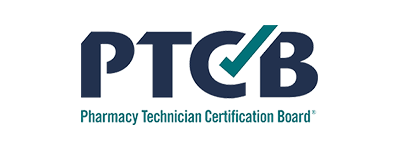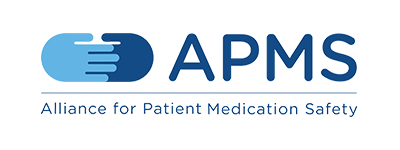Build a Positive Safety Culture in your Pharmacy
 Written by APMS PSO staff in consultation with its Chief Medication Safety Officer, John M. Kessler, BS Pharm., PharmD.
Written by APMS PSO staff in consultation with its Chief Medication Safety Officer, John M. Kessler, BS Pharm., PharmD.
Find a self-assessment at the end of this article to share with your pharmacy team!
Over twenty years ago the Institute of Medicine* reports highlighted the unhealthy culture of individual blame that existed throughout healthcare. Organizations began the daunting task of reworking their goals and priorities so that lessons learned from the patient safety movement resulted in improved outcomes. Often, economics and other priorities compete for focus. For example, razor thin profit margins create pressure for pharmacies to fill as many prescriptions as possible, which can encourage a culture that values quantity over quality. Mistakes are inevitable when the primary focus becomes the number of prescriptions going out the door rather than the patient’s safety and optimal medication use outcomes. The adoption of a positive safety culture and a just culture is a fundamental and necessary core value as it can result in more efficient operations, optimized workflow, fair treatment of employees, and improved patient outcomes. At a fundamental level, ethical principles support the optimal safety culture that all pharmacies strive for: respect for patient autonomy, truthfulness, fidelity, beneficence, and non-maleficence.
The Pharmacy Environment
For a positive safety culture and a just culture to thrive, the owner or senior management must demonstrate through words, written policy, and action that the collection and analysis of mistakes and near misses are encouraged and valued as opportunities to learn. Leaders and employees are committed to building a safety mindfulness into the daily workflow, organizational decision making, and individual behavioral choices. An awareness exists that recognizes human fallibility as inevitable, even with familiar, well-designed processes, and highly-trained, experienced employees.
A safety culture exists when individual choices and organizational decisions are driven by the shared goal of recognizing and reducing risk to prevent patient harm and when there is shared accountability for the outcomes produced. It is not a blame-free environment, but one that seeks to discover the weaknesses in the system so that processes can be improved.
Patient Safety Organizations
A Patient Safety Organization (PSO) can help you to develop a safety culture and a just culture. The Alliance for Patient Medication Safety (APMS) is a PSO that helps independent community pharmacies build and improve these cultures by providing the following: defined legal confidentiality protections for quality and safety programs, strategies for improving the culture of reporting, and strategic ways to learn from patient incidents, risky behaviors, and unsafe conditions. In brief, PSOs help pharmacies create a safe space to talk about continuous quality improvement plans. Pharmacies are not automatically granted these important PSO protections until they join a PSO and participate in PSO-related activities.
Reporting Culture: Increasing the visibility of risk and harm
The first step is to increase the visibility of risk in the pharmacy and harm to patients. PSOs can help pharmacies start or enhance a program that encourages all employees to report occurrences of medication errors, potential errors (i.e., good catches/near misses), unsafe conditions, and adverse reactions. Collectively these are known as Quality-Related Events (QREs). A well operationalized QRE reporting program will assure that employees know what to report, how to report, when to report, and what happens to their report afterwards. The system should be available to all employees, easy to access, and easy to use when the employee sees a problem or is concerned about a risk to patients.
High quality and informative reports enable pharmacy managers to see and fully understand the problem. Most reporting systems use a combination of checkboxes and narrative fields to capture this information. Narrative stories, using the reporter’s own words, are often rich with information that helps uncover the true causes of error and harm. An informative and complete report will include a full description of the event; the degree of actual known harm, immediate mitigation steps to provide care or referral for care, and the ultimate outcome of the event (e.g., resolved, ongoing, permanent/irreversible harm). A thorough, complete narrative will make it easier to understand how the QRE happened and how it was detected so that workflow adjustments and corrective actions can be more exact.
Quality Assurance (QA) Meetings
The next step is to hold regular QA meetings with the pharmacy team within the safe space defined by the PSO. Within this safe space, managers can lead discussions about the risks and harms that have been reported and any lessons learned. Effective QA meetings will engage employees in a discussion of other probable causes and related concerns, gathering additional information to better understand the problems. Effective QA meetings also provide feedback to employees on how their reports were used to make improvements that reduce risk, harm, and decrease rework. Positive feedback to front-line employees is one of the most significant ways to build or enhance a safety culture and the reporting culture.
A Just Culture: Holding individuals and the system accountable
A just culture is one component of the larger patient safety culture. A just culture acknowledges that errors occur in any system in which humans work and strives to treat employees fairly and respectfully. A just culture holds the employee and the system accountable for the risk or harm. Pharmacies with a just culture will evaluate errors by looking at both human fallibility, human behaviors, and performance factors of the system. After a fair analysis of the QRE, the event is attributed to one of 3 categories: simple human error, risky behaviors, and reckless behaviors. The pharmacy manager then acts based on the category. Human errors are managed by consoling the employee and providing remedial actions if necessary. Risky behaviors are managed by coaching the employee to make safer choices. This coaching addresses the employee’s perception of risk and the behaviors that increase or reduce risk. Reckless behaviors are willful actions with the intent to harm and these (rare situations) are managed by punitive actions plus remedial actions as appropriate. In nearly every instance, system performance factors are also evaluated for their contribution to the error or harm.
Why a Just Culture matters.
It is difficult to build or improve a positive safety culture or a reporting culture in a workplace perceived as unfair and unjust. When employees are punished for human error, the outcome can be demoralizing to the individual and to others on the team. Employees are less likely to report future events for fear of being blamed or to prevent a colleague from being punished. Managers become even more disconnected from the reality of risks and harms as the likelihood and frequency of reporting decreases, small risks can grow larger and small harms can become significant harms. When employees are coached on risky behaviors, the manager is fundamentally changing the thinking and perception about risk. Effective coaching will either lead to positive changes in the employee’s behavior (i.e., by changing the perception of risk) or identify a situation that needs different remediation approaches.
Summary
A just culture, a reporting culture, and effective QA meetings are synergistic and essential parts of the pharmacy’s overall safety culture. The PSO adds further legal protections, providing a safe space to report, discuss, plan, and act to minimize risk and prevent future harms. Importantly, pharmacies must join a PSO to enjoy these protections.
Self-Assessment
Promote a safety culture that is built on the principle of a “collective mindfulness” of the possibility of failure and encourage employees to speak out with their concerns. Evaluate your pharmacy’s culture with a self-assessment (below). Share with your pharmacy employees and see if you all agree. This is a great start to creating a just culture, a reporting culture, and a safety culture in your pharmacy.
Check all that apply:
- Your pharmacy’s safety culture accepts that mistakes will happen, but preventing harm is the primary goal
- Pharmacy employees feel confident in speaking up, regardless of hierarchy.
- Pharmacy employees are encouraged to report QREs when they happen, without fear of penalty.
- QA meetings are conducted under the umbrella of PSO protections and focus on the problem, not the people involved.
- Pharmacy encourages storytelling during QA meetings to learn from mistakes.
- When the pharmacy implements corrective action plans, they make sense, are shared with all employees, and follow the 3-part “sniff test”:
- Does your workflow make it easy for each employee to make the safest choices and make it difficult to make unsafe choices?
- Can everyone see a clear line of reasoning between the causal/contributing factors and the actions taken? If managers and employees can’t easily see the connection, you need to rethink the plan.
- Is the corrective action plan monitored to assure it is working as intended or modified to better achieve its intended effects? More complex corrective action plans are piloted in a few locations before deploying across the company.
The mission of APMS® is to foster a culture of quality within the profession of pharmacy that promotes a continuous systems analysis to develop best practices that will reduce medication errors, improve medication use and enhance patient care. Pharmacies work with APMS® to look for inherent risks in the pharmacy’s workflow. Their program, Pharmacy Quality Commitment +TM (PQC+,) is an interactive CQI program that provides tools and resources for the pharmacy workforce to identify, report, and analyze quality-related patient safety events. APMS is a 501 c 3 supporting organization of the National Alliance of State Pharmacy Associations.












